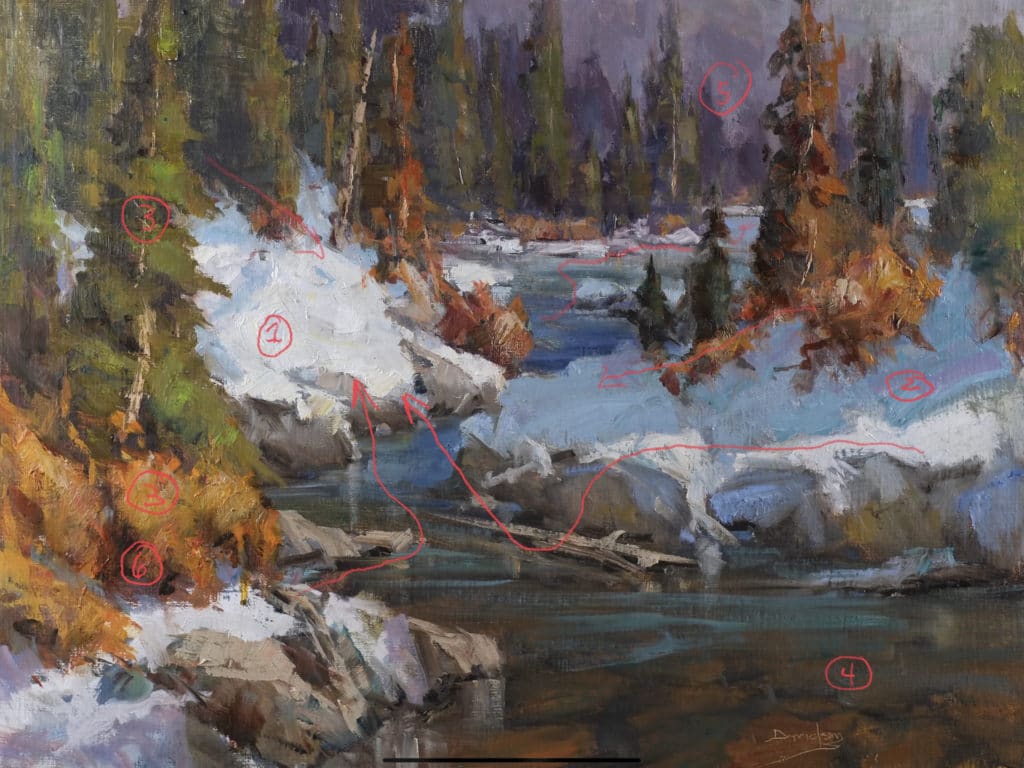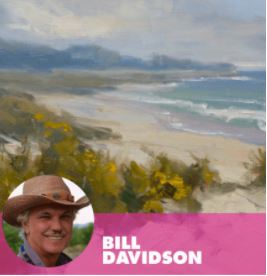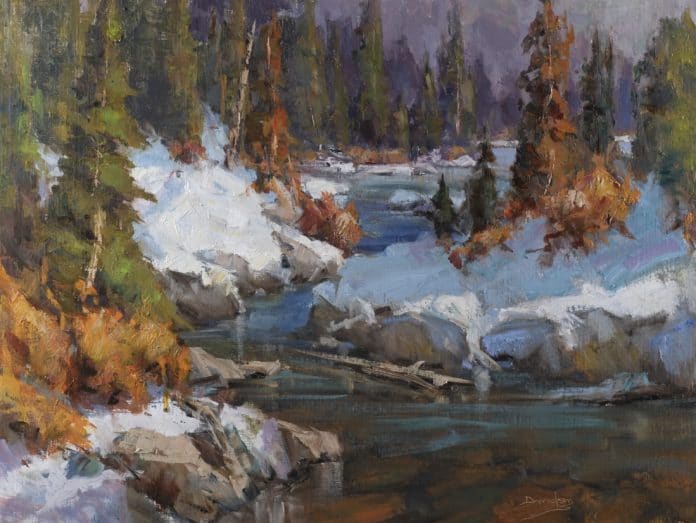Plein air painter Bill Davidson takes us through his process of creating a powerful landscape painting with these “mental keys.”


Making a Painting Shout to the Viewer: Mental Keys
BY BILL DAVIDSON
(billdavidson.biz)
1. I have a passion and beauty (my theme — here, a highly sunlit snow bank) to share and, most importantly, a belief I have the skill set to create a special painting.
2. I give myself permission to play and fail so that I can push past my limits and take risks on the painting. (In the 150 workshops or so that I’ve taught, more than 95 percent of the students are too timid in the light and shade).
3. I always decide the placement of the focal area (see area #1 in the painting above). Only then can I design the image to move you to the focal area and to journey to other areas of interest. Little studies playing with designs are useful.
4. I proceed thinly with a warm tonal or wash, setting up design, shapes, and values and the directional lines, to the focal area.
5. On a second thin run, I begin from the focal area working outward to the rest of the painting. The more you get right around the focal area, the easier it is to finish the painting, and you are freed to really explore the rest of the canvas. Nail the contrast between light and shade values, and the warmth of the sun magically appears; you can feel it. Don’t be afraid to really push it. Masters wipe off areas often.
6. Everything is RELATIVE: shapes to shapes, values to values, and cools to warms. Look at the intensity and warmth in the colors closest (3, 4, and 5). There are warm and relatively cooler colors in both shadows and light (2) and everywhere. It causes a scintillating vibration.
7. I keep building multiple colors and temperatures and layers next to and around each other with different transparencies and textures. For example, examine the front left bank and bushes. Also, I like to play and use whatever tools that work.This creates exciting energy and an exciting life as an artist and draws viewers to your paintings.
8. I also play with the edges, to move viewers through the painting and define the hardness of objects. Soft edges should appear near the edges of the canvas. Always check edges in the last few minutes of painting and work from both sides — you will be amazed by the difference in the look. Always vary brushstrokes; that is an art in itself. Oil paint is textural, buttery, and fun, so sculpt it toward the end in big, juicy areas.
9. Get fresh eyes and look for ways to get more energy and interest, transitions and colors that harmonize. Go from ordinary to extraordinary by trying new things.
10. Ask two last questions:
Did I create the mood and magic I wanted to convey?
Could I try to push it further?
Then congratulate yourself on the risks you took. I just bet they are what made the painting extraordinary, and you have learned something new.
Bonus interview with Eric Rhoads and Bill Davidson with inspiration for artists, filmed in Austin, Texas, at the Streamline Publishing studios:
Learn how to paint landscapes and more with Bill Davidson from the comfort of your home when you order any of his painting video workshops, available through PaintTube.tv.
Visit EricRhoads.com to find out all the amazing opportunities for artists through Streamline Publishing, including:
– Online art conferences such as Plein Air Live
– New video workshops for artists
– Incredible art retreats
– Educational and fun art conventions, and much more.
> Subscribe to Plein Air Today, a free newsletter for artists
> Subscribe to PleinAir Magazine so you never miss an issue





